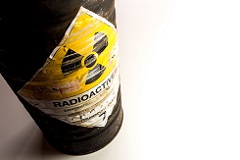Fishing the radioactivity out of nuclear waste
Cleaning up radioactive waste is difficult and often dangerous, especially when uranium is involved. In order to solve the problem of safely handling nuclear waste, a better understanding of uranium is needed. The EU-funded UNCLE project, which closed in 2014, focussed on improving the clean up process with a study on how uranium undergoes chemical bonding and the effect this has on reactivity. As a result of this work, UNCLE researchers concluded that uranium nitride and oxo-complexes are essentially the same, the only difference being the swapping of a single nitrogen atom in nitride for an oxygen one in oxo-complexes. Researchers realised that the symmetry of the complexes and oxidation state of the uranium ions, rendered them ideal systems from which to develop quantitative models. The problem, however, is that moving from qualitative to quantitative approaches requires a large family of molecules. To overcome this barrier, researchers identified a reliable new way to make uranium nitride complexes that allows for the preparation of a large family of molecules. Gone fishing, with arsenic bait Using the UNCLE-developed quantitative model, and its understanding of how elements like thorium and uranium interact with elements from around the periodic table, researchers have discovered how arsenic molecules can be employed to ‘fish out’ the most toxic elements from radioactive nuclear waste. According to findings due to be published soon in ‘Nature Communications’, researchers report the first examples of thorium with multiple bonds to arsenic existing under ambient conditions on multi-gram scales. Prior to the research, this has only been accomplished on very small scales and at temperatures approaching that of interstellar space (i.e. 3 – 10 Kelvin). What this means is that the decommissioning of nuclear power plants could soon become safer and more effective, also offering hope for cleaner energy. ‘Nuclear power has the potential to produce far less carbon dioxide than fossil fuels, but the long-lived waste it produces is radioactive and needs to be handled appropriately,’ says researcher Elizabeth Wildman. ‘We need to reduce the volume of nuclear waste in order to make it easier to handle and process it to remove benign elements or separate the high level from low level waste.’ Potential in soft donor atoms The ultimate goal is to use organic molecules to selectively extract metal ions from the ‘soup’ of nuclear waste and fish out the more radioactive and toxic ones, leaving the rest behind. ‘This requires an understanding of chemical bonding and how the organic extracts bind to different metals,’ says the UNCLE Project Coordinator, Stephen Liddle who was also involved in the latest research. ‘We can then exploit this knowledge to achieve separation by having them selectively bind to one type of metal and remove it from the soup.’ According to Liddle, there is mounting evidence that the best way of doing this is with molecules containing soft donor-to-metal binding. ‘Arsenic is a soft donor, so we have prepared model complexes with it to understand the nature of the bonding,’ he explains. ‘Here, we have made molecules in multi-gram quantities, which are stable under ambient conditions and thus allow us to study them more straightforwardly.’ With the new knowledge and understanding that researchers hope to gain from this latest work, UNCLE’s findings may soon be applied to an operational system. For further information please visit: CORDIS project page
Countries
United Kingdom



